We are always fascinated when someone can take something and extend it in a clever way without changing the original thing. In the computer world, that’s old hat. New computers improve, but can usually run old software. In the real world, the addition of stereo to phonograph records and color to photography come to mind.
But there are few stories as strange or wide-ranging as the path to provide color TV. And it had to be done in a way that a color set could still get a black and white picture and black and white sets could still watch a color signal without color. You’d think there would be a “big bang” moment where color TV burst on the scene — no pun involving color burst intended. But there wasn’t. Instead, there was a long, twisted path with many competing interests and ideas to go from a world in black and white to one tinted with color phosphor.
Background
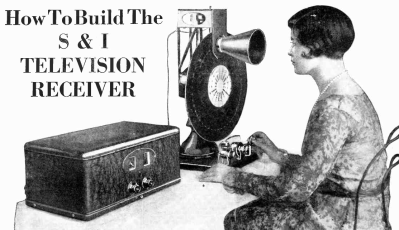
It is hard to imagine, but John Logie Baird transmitted color images as early as 1928 using a mechanical scanner. Bell Labs had a demonstration system, also mechanical, in 1929. Baird broadcast using his system in 1938. Even earlier, around 1900, there were attempts to create mechanical color image systems. Those systems were fickle or impractical, though.
Electronic scanning was the answer, but World War II froze most consumer electronics development. Baird showed an electronic color system in late 1944. However, it would be 1953 before NTSC (the National Television System Committee) adopted the standard color TV signal for the United States. It would be almost 20 years later before SECAM and PAL were standardized in other parts of the world.
Of course, these are all analog standards. The world’s gone digital now, but for nearly 50 years, analog color TV was the way people consumed TV in their homes. By 1941, NTSC produced a standard in the United States, but not for color TV. TV adoption didn’t really take off until after the war. But by 1950, the US had some 6 million TV sets.
This was both a plus — a large market — and a negative. No one wanted to obsolete those 6 million sets. Well, at least, the government regulators and consumers didn’t. But most color systems would be incompatible with those existing black and white sets.
Practicality
In addition, a practical solution for home use couldn’t use expensive optics or precisely adjusted mechanics. RCA demonstrated a system in 1940 that used three black and white screens with color filters, each projecting to the same screen to get a dim color image. Although these kinds of projectors were among the first big-screen TVs available decades later, the technology of the time made three tubes and receivers prohibitively large and expensive.
Some thought of combining three guns into one picture tube, which would turn out to be the right answer. However, the tubes of the day were not very precise. To match a monochrome tube, the electron guns would need to focus on a spot three times smaller than a monochrome picture tube.
This was impractical in the 1940s, so people experimented with hybrid systems that used a single monochrome screen and some disk or mirror to pass the picture through a color filter at the exact right time. Since the system showed a picture three times per frame, the frame rate had to increase, making things incompatible with existing receivers. Baird’s 1940 demonstration did just this, but even he admitted that the mechanics were not really practical.
CBS vs NBC
Meanwhile CBS was experimenting with a system from Hungarian Peter Carl Goldmark. It was also partially mechanical and used a disk with color filters spinning at 1,200 RPM. The FCC and the press got a demo in 1940.
In 1941, NBC — then owned by RCA — started its own color broadcasts. There were no color sets, though, and the signals wouldn’t work with an old TV, so unless you were invited by NBC to watch, you couldn’t see it. And then the war was starting, so most color TV would go on hold until later.
Telechrome and Others
Baird was working on Telechrome, which used two electron guns aimed at either side of a phosphor plate. By necessity, this could only produce two colors, so the picture wasn’t perfect. There were plans to create a three-gun system, but Baird died in 1946, and that was the end of Telechrome.
There were a few other similar systems up through the 1950s. The Geer tube used tiny pyramids, where each side had a different color of phosphor. The Penetron had three layers of phosphor and increased the beam strength to light up the top layers. There were others.
Post War
After the war, it was clear that color TV would come. The FCC was worried about channel space and created the UHF band. At the time, everyone thought that color TVs would be unusable for old black and white transmitters and vice versa, so the idea was VHF would stay black and white, and UHF would house color stations until all the old transmitters were gone.
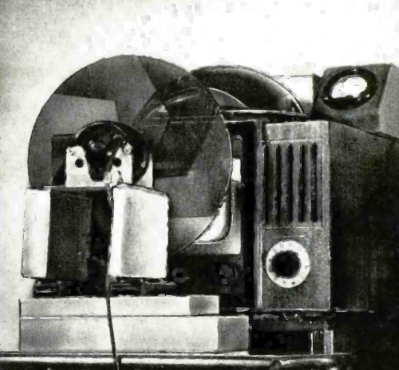
CBS improved its system, which showed 144 fields per second at 405 lines of resolution. Philco and Color Television, Inc. also had systems. The FCC was to pick, but RCA declined to demonstrate the technology it was working on during the 1948 meetings of the Joint Technical Advisory Committee (JTAC).
In 1949, JTAC endorsed the CBS system, and RCA showed their system, which allowed black-and-white programs and receivers to continue working. The FCC, however, said the Color Television Inc. and RCA systems were flawed and approved the CBS system in late 1950.
CBS had one color camera and had used it in the early part of 1950 to broadcast a few hours of programs to TVs installed in public buildings. However, even after approval, they had to wait for an RCA lawsuit to conclude before starting broadcasting in earnest.
The CBS Debacle

In the middle of 1951, color TV was officially on the air using the CBS system. Unfortunately, there were virtually no color TV sets, and the signal wasn’t compatible with black and white receivers. There were some adapters, but they were not generally popular. CBS eventually bought a TV maker and produced CBS-Columbia color sets late in 1951.
They shipped 200 sets, and only 100 were sold. A month later CBS decided to shut it down — possibly by request of the government due to the Korean War. CBS bought back the handful of receivers to prevent a possible lawsuit. David Sarnoff of RCA claimed the Korean War excuse was just that — an excuse to allow CBS to gracefully get out from under an unworkable business.
The RCA Concept
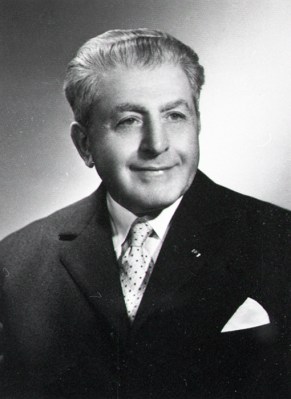
RCA used a 1938 invention from a Frenchman, Georges Valensi, to pull off its compatible color signal. The system took the color information from three cameras and generated a luminance signal that was — essentially — a black-and-white image using the normal standard.
Valensi’s original system also produced a chroma signal consisting of the blue minus the luminance and the red minus the luminance signal. A black-and-white TV tuned to the luminance on one channel, while a color set would pick up both signals using two frequencies.
In the color receiver, you would add the luminance or subtract from it to recover all three color channels. The downside, though, was that it required two different frequencies. In addition, RCA’s early attempts used projection, which was weak and difficult to align. RCA wanted to develop a color picture tube and reportedly spent $100 million to do so. The Geer tube was first, but RCA eventually successfully produced a pre-war invention from German Werne Flechsig.
Fleshcsig’s tube used a shadow mask to prevent, for example, the green beam from hitting a red phosphor dot. The downside is that the shadow mask also reduced the intensity of the beams, which required a more energetic electron gun. That’s why color TVs had much higher voltages than black-and-white sets.
In 1949, RCA broadcast the TV show “Kukla, Fran, and Ollie” in color, although only the FCC had the equipment to view it. The FCC still did not approve the system.
Reenter the NTSC
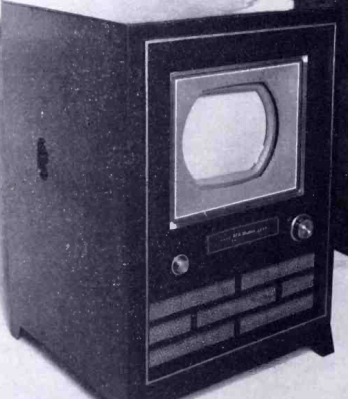
The NTSC decided to reform to reconsider the color TV problem. The FCC was opposed and even accused enginers that favored the RCA or similar systems as being “in a conspiricy against the public interest.” The NTSC worked on a system based on RCA’s design starting in 1950 and broadcasts tests in 1951. The system used a subcarrier to transmit the chroma signal, meaning it required no additional bandwidth and would continue to work with the millions of TVs already in people’s homes. Early in 1953, CBS testified to Congress that they were out of the color TV business, and this allowed NTSC to seek approval, which they got at the end of 1953.
The original monochrome signal was refreshed at 60 Hz, the same as the US powerline frequency. A color signal, however, refreshes at 59.94 Hz, which most sets could easily accommodate, and reduces interference between the color signal and sound. The color information appears on two 3.58 MHz (actually, 3.578545 MHz) carriers that are 90 degrees out of phase and then carrier suppressed. The resulting sine wave varies in amplitude based on color saturation and phase based on color hue. Adding this signal to the luminance — the normal black-and-white signal — results in a normal video signal that also contains the color information.

Most TVs have a trap to keep the color information from showing up on the screen, but very old TVs may lack this. The only other issue is a phase reference to measure the chroma signal against. On the “back porch” of the video signal’s horizontal sync pulse, there are a few cycles of the unmodulated color subcarrier. The audio is also encoded on a subcarrier at 4.5 MHz using FM.
To make everything fit in a 6 MHz TV channel, the transmitter suppresses the lower sideband (but does not remove it). The lower sideband occupies 1.25 MHz. The upper sideband is 4.2 MHz wide and contains the chroma signal about 3.58 MHz away from the center. The audio is FM modulated at 4.5 MHz with a 25 kHz deviation. There’s also a 250 kHz guard band at the bottom, giving a total of 6 MHz. If you want a good introduction to NTSC video, [John] has a good video talking about NTSC output on a Z80 you can see below.
Adoption
Of course, there were few sets and not a lot of color programming. The 1954 Tournament of Roses Parade was in color, and the 1956 season of the Perry Como Show was, too, or at least most of it was. The RCA TK-41 color cameras needed bright lights and were expensive to operate.
It would be over a decade before most network shows were in color and the cost of color sets made them practical. For example, in 1954 a color TV was selling for around $1,200 — quite a bit of money back then. Westinghouse reportedly sold 30 sets in the first month of sales.
By 1964, only 3.1% of US homes with a TV had a color set. It was 1972 before color TV sales exceeded black-and-white, and that same year, the percentage of homes with color was more than half.
Of course, in the early 2000s, everything went digital, and all of this was moot. There are no more black-and-white sets unless you turn down the color control.
When you think about it, the ability to shoehorn a color signal on a black-and-white signal is remarkable. Even more so when you think of all the manipulation required without the sophisticated techniques we’d use today to generate precise frequencies and times.
While we’ve talked about NTSC many times, we don’t always dig through the whole history. Of course, there’s also the history of the rest of the world, which we didn’t even scratch in this post.

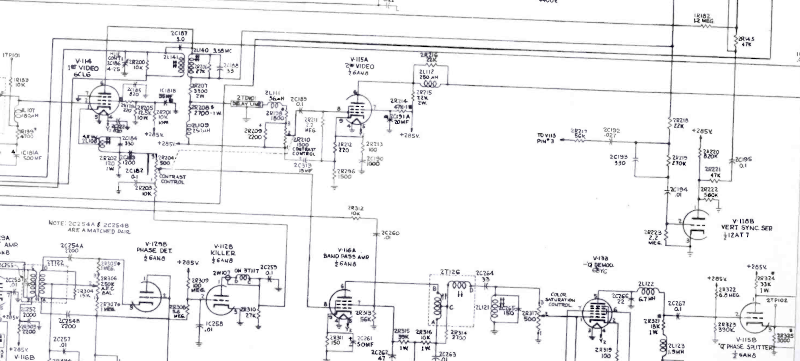














If you are near Columbus, Ohio you need to check out the Early Television Museum in Hilliard.
https://www.earlytelevision.org/ It’s worth the visit if you have any interest in the history of TV.
Been there. Great place. They have some of the early color wheel sets OPERATIONAL!
Was going to post about the museum, but you beat me to it.
You might also like the MZTV museum in Toronto. Really just one room, but some very impressive early sets. One of them was a demo unit for the World’s Fair 1939 with all-Lucite chassis to prove to observers that the broadcast picture wasn’t a gimmick with mirrors reflecting actors off scene.
Today I learned that someone invented something called “The Penetron” and it was not at all what I would have expected it to be.
Something I learned from somewhere a long time ago.
NTSC = Never The Same Colour
SECAM = System Essentially Contrary to American Method
PAL = Perfect At Last, or Picture Always Lousy
Great article – something I should have said first ;-)
NTSC = Never Twice the Same Colour in my recollection.
It always gave me great amusement when I visited the states to adjust the tint knob on my host’s sets and make peoples faces green, puce or yellow.
It was quite a change.
https://youtu.be/fROmOec3qDQ
I also know
NTSC = Not The Smartest Choice
(given the time and previous existing knowledge, I disagree. It’s one of those hindsight things.)
SECAM = System Even Crueler than American Method
or (which I like more)
SECAM = Several Extra Colors A Minute
PAL = Pay Additional Luxury
NASA’s colour TV standard used on Apollo and early Shuttle flights was very similar to the CBS sequential colour system, just using the regular NTSC line and frame timings.
Using the U.S. Bureau of Labor Standard’s CPI calculator, $1200 in January 1954 is roughly $13850 in February 2024. So a very expensive TV set considering most programming wouldn’t have been in color at that point.
It’s not 3.578545, it’s 3.579545…
Which is exactly 227½ ⨯ line frequency, with ½ being the magic ingredient that makes stuffing luminance and chrominance into one channel possible.
Sort of.
The 1/2 allows the two 262.5-line fields at 60 Hz to interlace to make a 525-line image that refreshes at 30 Hz. The interlacing reduces the visible flicker.
Stuffing luma and chroma into one channel is more a case of picking a subcarrier and allocating bandwidth accordingly.
The ½ here is magic in the frequency domain. Luma information is not a continuous thing, it is centered around multiples of the line frequency. The ½ makes the chroma go exactly between those peaks, allowing luma and chroma to share a part of the channel bandwith. Because color subcarrier and line/frame frequencies are locked together, chroma can be extracted by synchronous demodulation without too much luma/chroma crosstalk.
Sometime in the 1980s, I did hardware design for the graphics systems that many of the networks used. I was in the control room during election night preparation when it was discovered that the red and blue chosen for the map were very close in luminance. Therefore it was hard to tell the difference between red and blue states. The director mulled what it would take to fix it and after a long pause said “fuck ’em”.
Never The Same Colo(u)r was often used by techies
One of the most elegant things about NTSC is how they chose the frequency and bandwidths for the chroma sidebands. The frequency is chosen so the bulk of the chroma energy falls into the unused parts of the frequency comb of the luma signal, to minimize crosstalk and maximize resolution for both signals.
But the coolest is how they picked the bandwidths to exploit the characteristics and limitations of the human visual system. First, luma gets the bulk of the bandwidth, because that’s what we see best: high resolution of contrast moving things.
Then, the quadrature (I/Q) chroma information is split into the orange-blue axis (I) and purple-green (Q) (aka red-blue/magenta-green). The I and Q phase is referenced to the colorburst pulse on the back porch that Al mentioned in the article.
What’s really neat is that the two are not symmetric! Because the human eye distinguishes many more shades of color in the orange-blue axis, the bandwidth allocated to I is triple that allocated to the Q axis.
And if that all wasn’t clever enough, they figured all this out and implemented it without a single semiconductor.
Which is why this was one of my favorite books.
https://www.amazon.com/Television-Engineering-Handbook-TELEVISION-ENGINEERING/dp/007004788X/
Explained everything down to the nitty-gritty.
I’ve been into electronics since I was a child and have worked as a technician and technologist for most of my adult life. When I was young, I regularly witnessed something which I never understood and have never found an explanation for.
When I was growing up our family had only B&W televisions until the early 70’s. During most or all of a roughly ten-year period, I could tell at a glance what kind of program I was seeing, based on how ‘warm’ the screen looked on any of our B+W TV’s. Televised films – movies and TV shows – looked cool and neutral; I’d say the colour balance was toward the daylight spectrum, with cool whites and neutral blacks. Evening news shows and game shows, among others, were different. The whites looked warmer, almost as though they had a slight reddish tinge, while the blacks had a slight burgundy/purple cast. And if I recall correctly – it’s been a long time – when news programs showed filmed footage, it appeared cooler.
The difference was arguably small – but it was 100% consistent and was repeated over the course of many years. I have never been able to figure out how a Black and White television system and CRT could somehow convey what I can only describe as colour temperature information. I’d be grateful if someone can offer even a theory for what I observed – it’s a mystery that still makes me shake my head whenever I think about it.
Visual perception is a lot more than what your eyes see, your brain makes up the missing information. https://en.wikipedia.org/wiki/Visual_perception
I’d lay bets that the type of show was based on time-of-day.
The human visual system adjusts the white point according to ambient light. If a fixed color temperature source (the CRT) is viewed in different ambient light conditions, it will appear to have a different color temperature.
Oddly enough, the perceived color temperature is also related to your blood pressure, so could even even be related to what you just ate.
It even might be related to the spatial frequency content of the image. High frequency, highly-detailed content can look a different color from the same content viewed at a different magnification.
To confound things even further, in the early days they even turned off the color information when transmitting black-and-white movies. Because the color subcarrier was not present, it allowed higher bandwidth to the luma information, yielding noticeably higher resolution for black&white movies.
Probably anyone who grew up in b/w times has percerceived some kind of “color” on b/w media. The brain mixes in information gathered elsewhere, it knows the appearance of a living room and the world outside, it might remember color photographs seen in a TV magazine or on a billboard, etc.
While your visual system can be tricked to see colors that aren’t there by exploiting artefacts of data reduction and limited bandwidth inside the brain, I don’t think this is the case here.
Thanks for the feedback.
To be clear, what I experienced was consistent with monochrome images. I didn’t see colours which were somehow context-appropriate. The kind of colouration difference I’m talking about is akin that of a black-and-white photo being printed on ‘cool’ blue-black print paper as opposed to ‘warm’ brown-black paper. In that case the tone difference isn’t solely in the paper; the emulsion itself renders blacks and greys as warmer- or cooler-looking, depending on the formulation.
The color killer lurking just before the video jungle waiting to capture any color snow and take it away form us. This is why snow is black and white.
Since I was very young I’ve beeb able to identify the colour red on my childhood 8bit computers green screen monitor. Somehow despite it showing as a shade of green it “looks” distinctly red to me. It confused my friends that I was almost guaranteed to be able to select red every time. I dont use that machine as often as I used to but I still seem to be able to do it even at my ancient age!
It could have something to do with the framerate. On a color TV, movies always seemed to have a “softer” appearance compared to TV shows that appeared very “crisp”. This softness/crispness refers not just to the image appearance, but also in the nature of the motion.
I’d imagine that the lighting choices of movie directors vs. television studios also contributed to the sense of color that you might see on a black and white set. What would be interesting to compare would be a movie scene showing broadcast news footage vs. direct news footage: would there be a difference?
Any live programming from the studio would have image characteristics partially determined by the Vidicon or Plumbicon (or any of various others) imaging tubes in the cameras, whereas film would have been converted to video with a telecine machine that likely used a flying spot scanner. So it’s not hard to imagine that subtle but consistent differences in the image characteristics could play into the perceptual and psychological effects others have suggested.
Remember the original “Back to the Future” movie? There is one nerdy plot-device I particularly loved: Marty McFly (Michael J. Fox) transports a portable “cam-corder” in the now-famous DeLorean time-machine from 1985 back to 1955, and Doc Brown (Christopher Lloyd) is able to view a certain fateful video recording on his 1950s vintage black-and-white TV. Three cheers for back-compatibility to the extreme. Re-watch!
That wasn’t a “cam-corder”, it was a portable television studio!
And adding color information into black and white signal is not even the last trick. Later teletext was added!
Yeah, but adding some digital information to a few unused scan lines in the vertical interval is nothing compared to the analog wizardry of the whole backwards-compatible color scheme.
“3.58 MHz (actually, 3.578545 MHz)”
I think you mean 3.579545 MHz.
Well, I’m within 0.03% of your answer.
Oddly the NAB Engineering Handbook (9th edition) says:
Specifically, the line rate is 15.734 kHz, the field rate is 59.94 Hz, and the color subcarrier is 3.578545 MHz.
https://www.worldradiohistory.com/Archive-NAB-Engineering/NAB-Engineering-Handbook-9th-Edition-1999.pdf
The original NTSC spec says:
The burst frequency shall be 3.579545 mc. The tolerance on the frequency shall be ±0.0003% with a
maximum rate of change of frequency not to exceed 1/10 cycle per second per second
If you want to get really picky about it, the correct frequency is 3.57954545454545…MHz. This is specified in CFR 73.682, and is 63/88 * 5.000MHz (precisely). This is convenient, since 5.000MHz is a common reference reference frequency obtainable from atomic clocks, and 63/88, though a bit messy, is not too hard to achieve.
It also happens that the line frequency is defined as 4.500MHz (precisely) / 286, which multiplied by 227.5 gives you the same number.
The numerology of the whole system is somewhat mind boggling.
It used to be that you could generally tell if you were watching a network feed or a locally originated signal by looking at the chroma subcarrier frequency. If it was within a few Hz of nominal, it was probably coming from the network. Local stations tended to be far less accurate. Conversely, if you knew you had a network signal, the subcarrier was a convenient high-quality frequency reference. I miss that.
Much like the AC power grid today, television sets in those days, if tuned to the same network, were frequency locked all across the country, and the scanning of the electron beam in your TV was actually sync’ed to the beam in the camera in the studio (give or take propagation and processing delays).
It may have been Never Twice the Same Color, but the fact that it worked as well as it did still amazes me.
NTSC, USA, was full choice – what color and how much. PAL, W Europe, limited choice – allowed viewers to decide only how much color. SECAM, France and E Europe, eliminated choice.
I fixed my ’81 Toshiba 19″ a couple of times (thank you, SAMS photofacts); still works.
[Note: No more ‘TV repairmen’ – or shops.]
No mention of Guillermo González Camarena? things that didn’t happen in the US didn’t happen at all I guess.
Since you might not have read to the end:
> Of course, there’s also the history of the rest of the world, which we didn’t even scratch in this post.
“Why does this story about American history not talk about things that didn’t happen in the US?”
You could think of the sound as being a “4.5 MHz subcarrier”, but in fact, the aural signal was provided by a completely independent FM transmitter, operating on a frequency 4.5 MHz above the visual carrier. The aural and visual signals were combined in a diplexer on the way to the antenna. The “subcarrier” thing was due to the way a receiver handled the signals; the aural went long for the ride through the early visual stages (very early receivers has a totally separate aural receiver section).
The vestigial carrier aspect of the visual signal was done by generating a full two-sideband AM signal and then wiping off most of the lower sideband on the way from the transmitter to the antenna — the filters were quite large. UHF ones looked like air-conditioning ducts.
Before digital TV WRTV ch6 and WICR FM 88.7 triplexed into one antenna at a glorious height and I got WICR reliably 60 mi (at the edge of “flat”) away. After that they went to UHF and WICR got put on the side of the tower and left my radio.
> in 1954 a color TV was selling for around $1,200 — quite a bit of money back then
According to the internet that’s $13,843.54 today. And people complain their $250 40″ TV “doesn’t last as long as they used to”…
I figure closer to $30k.
And that little box was incredibly heavy. (So many transformers – for coupling. matching, power.)
Let’s see, according to a now passed family member, he saw color TV sets for sale in a store in a Japanese city in (about) 1953. Heatthkit started selling an excellent kit around 1966. (All tubes of course.) Oh and inside the Broadcasters Hall of Fame museum that keeps the Computer Museum (VCF) company at InfoAge are a collection of color TV sets from that period. Also include a camera also used by WOR at one point. And for connecting anything to a TV set from the period take a look at TV Typewriter Cookbook for help.
“in a conspiricy against the public interest.”
Conspiracy.
Europe wasn’t 20 years behind the US. The BBC were experimenting with 405 lines NTSC encoded colour in the late 50’s. They also tried SECAM on 405 lines. By 1964 the UK decided to pursue 625 lines for colour and officially adopted PAL by 1966. The first official start of colour was launched with the Wimbledon tennis tournament in July 1967 on the BBC Two channel. Teletext was launched in the 70’s, NICAM stereo in the 80’s, DMAC satellite in 1990, DVB late 90’s when it all started going downhill!
My late FIL was an engineer for RCA for almost 30 years, he told me he worked on engineering the Color TV systems and the broadcast equipment. He left me his collection of internal (as in not to be removed from company premises) engineering books from RCA, most have to do with the math of making it work, another establishes the NTSC standards. By far the most interesting was the book on the Trinoscope which was a 32-inch rear projection color TV using 3 separate vertical electron guns with a lens and a mirror to create a color TV image. This was in 1946! A full 9 years before the first commercial color set were available! Amazing how much is held back from the public sometimes. Makes you wonder what other cool technologies we could have had much earlier than when they were released for public consumption.
Was the Land Effect ever used experimentally to create a perceived color image but using a B&W TV? I could swear I saw a color image on a B&W TV in 1959 or 1960 broadcast by either WMAL or WTOP in Washington DC. It was at the end of a broadcast day.